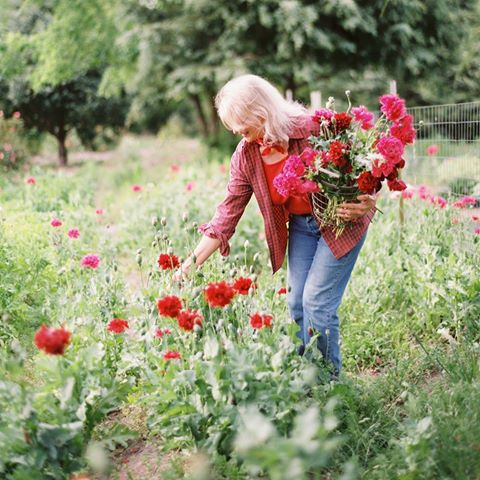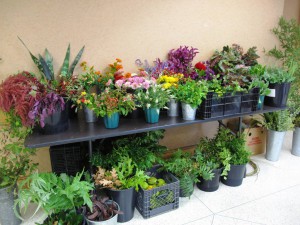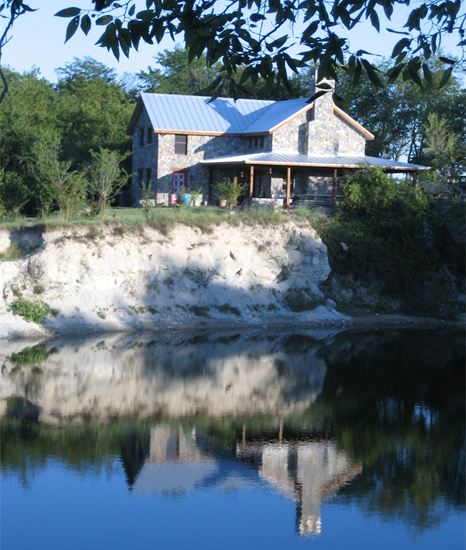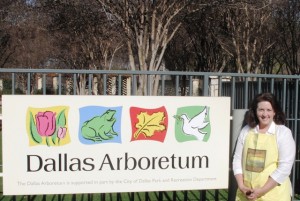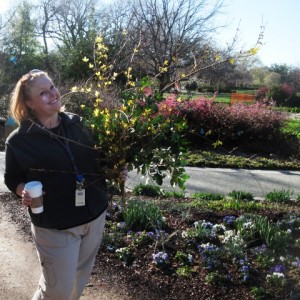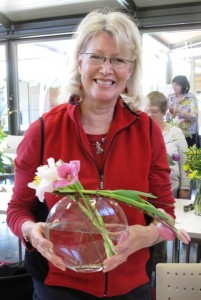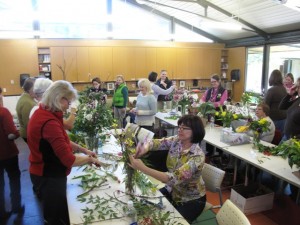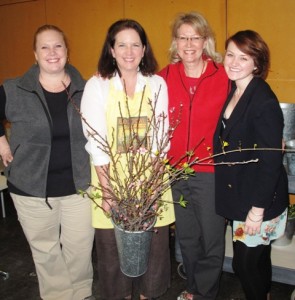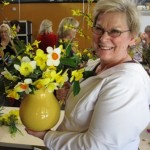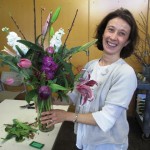Podcast: Play in new window | Download
Subscribe: Apple Podcasts | Podcast Index | RSS | More
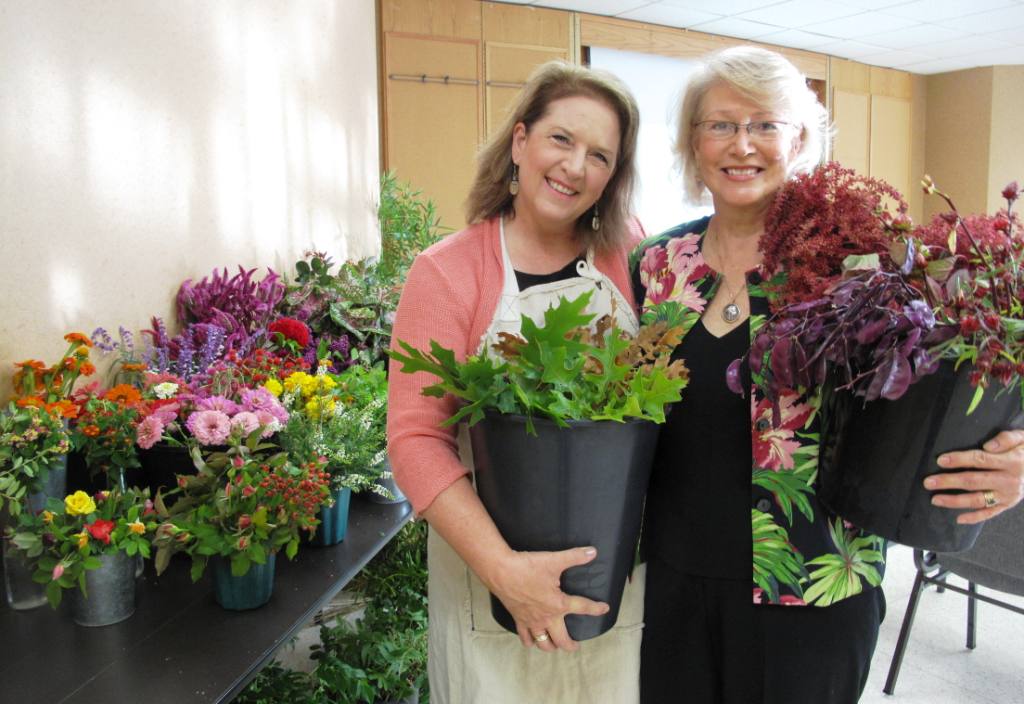
My visit to Ft. Worth this month gave me a wonderful chance to reconnect with flower farmer Cynthia Alexander.
You could call Cynthia Alexander, a “chapter two” flower farmer. A passionate gardener, Cynthia has spent the past several years reinventing herself from a real estate attorney into someone whose relationship with land is exemplified in a completely different way!
Over the past few years, Cynthia and her husband Bob have been transitioning from the city to the land. Quarry Flower Farm, their 120-acre farm, is located in Celina, Texas, about 40 minutes outside of the Dallas-Ft. Worth urban center.
Earlier this month, I traveled to the Ft. Worth Garden Club to lecture about the “Slow Flowers” movement and to lead a workshop for members of the Garden Club’s floral design group. This was my second visit to the Dallas Ft-Worth area to talk about LOCAL flowers and in both cases, my “credibility” was enhanced thanks to Cynthia.
She is a native Texan whose goal is spreading beauty through organic agriculture and the practice of good land stewardship. Her repertoire of ingredients is impressive!
At Quarry Flower Farm, Cynthia grows native Texas shrubs and trees, as well as perennials, annuals, grasses, bulbs, vines and herbs. Her fascination with botanical elements means she has an incredibly diverse list of ingredients for floral fans, everyone from hot floral designers to farm-to-table caterers.
Here is the extensive list of flowers, foliage, herbs, branches and ornamental grasses she provided for the Ft. Worth workshop:
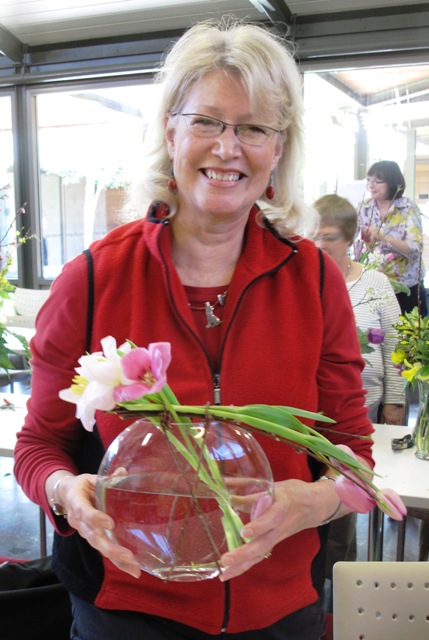
Cynthia’s design talents were evident when we met in 2012 at a field-to-vase workshop I taught at the Dallas Arboretum.
Cynthia first came to my rescue in February 2012 when I taught an eco-floral design course at the Dallas Arboretum. I had contacted her through the ASCFG directory, asking for help. Cynthia showed up with a bevy of flowering bulb varieties and spring branches – much to the delight of the Dallas floral design students. After all, it was FEBRUARY, for goodness sake’s. She saved the day!
The same thing happened when I encouraged the Ft. Worth Garden Club to source LOCAL Texas leaves, branches and flowers from a real flower farmer. Cynthia is a gem. And you’ll find her personal story fascinating.
I mean really….how many people leave a successful, 30-year career as an attorney in order to dig in the dirt and grow cut flowers? For that reason alone, I adore this gifted woman. Enjoy our conversation and listen for all of Cynthia’s advice about her second career – as a cut flower farmer.
Cynthia hosts garden club tours, bridal parties and U-pick guests by appointment during the spring growing season. Check her web site for details.
Other Resources mentioned in our interview:
The Flower Farmer: An Organic Grower’s Guide to Raising and Selling Cut Flowers (Chelsea Green Publishing, 2008), by Lynn Byczynski
Cynthia mentioned that her inspiration began by spending time with Pamela and Frank Arnosky, owners of Texas Specialty Cut Flowers. The Arnoskys have also written an important resource, as well, Local Color: Growing Specialty Cut Flowers.
Association of Specialty Cut Flower Growers is a membership association of flower farmers in every state. The ASCFG has many wonderful resources for beginning and established flower farmers.
Thanks for joining me in this episode of SLOW FLOWERS. Because of your support as a listener, we’ve reached nearly 2,000 downloads since July – and I thank you for taking the time to join to my conversations with flower farmers, florists and other notable floral experts.
If you like what you hear, please consider logging onto Itunes and posting a listener review.
Until next week please join me in putting more American grown flowers on the table, one vase at a time.
The Slow Flowers Podcast is engineered and edited by Hannah Holtgeerts. Learn more about her work at hhcreates.net.









